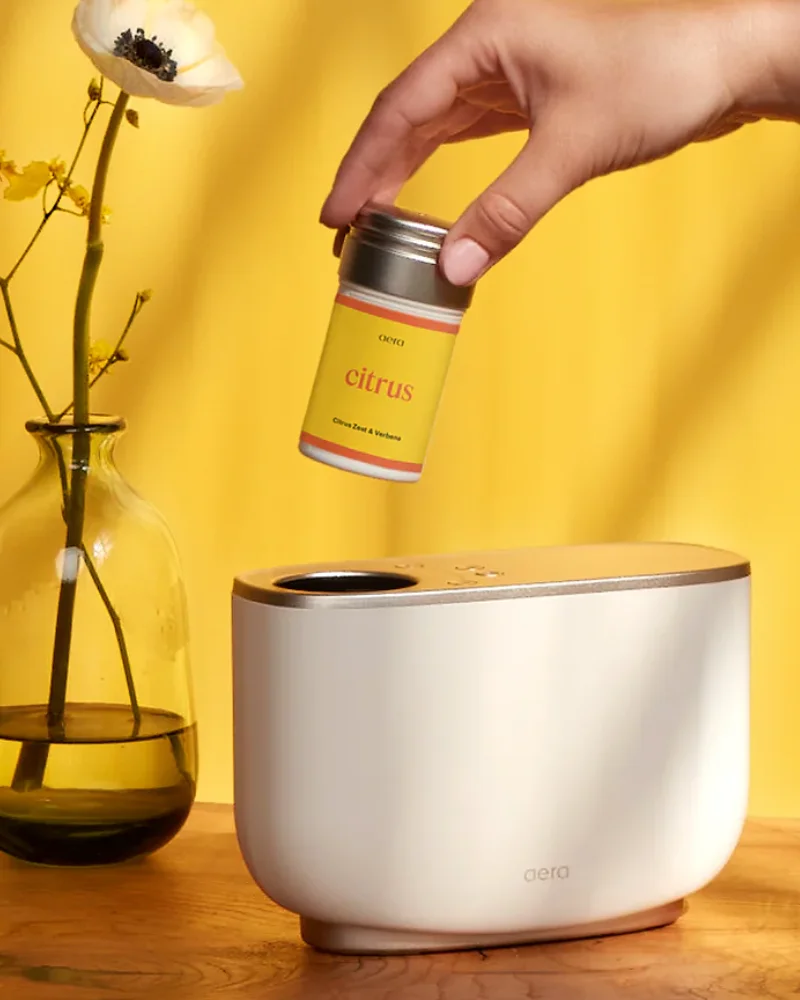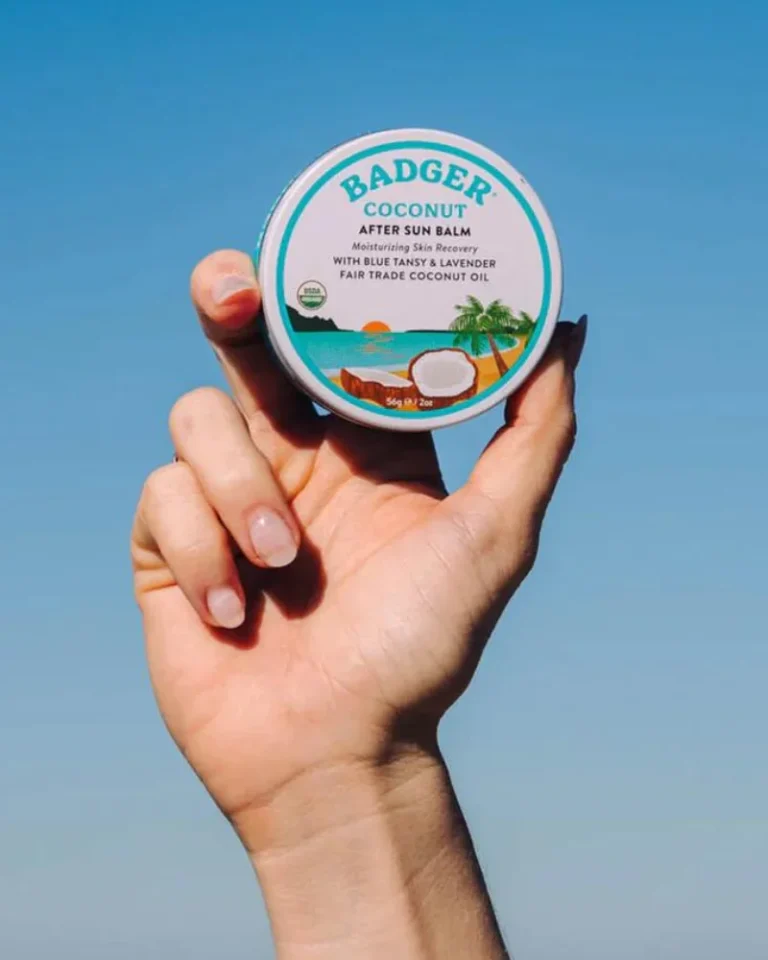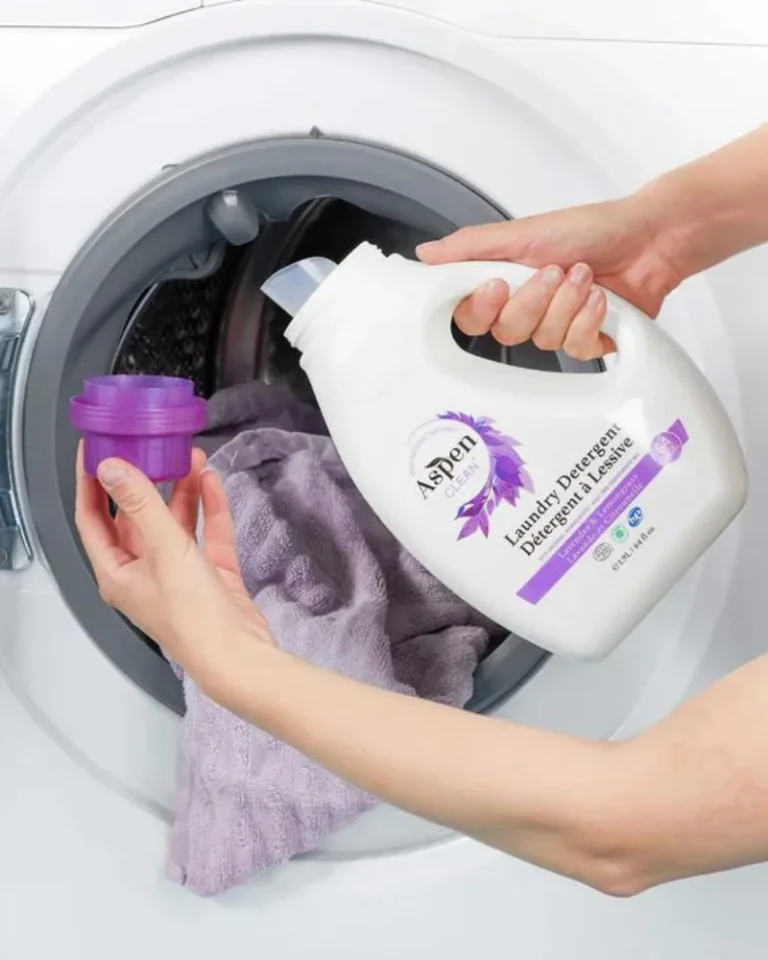This post may contain affiliate links. By browsing this website, you agree to our disclaimer, privacy policy, and terms of use.
Have you been looking for the best natural alternatives to air fresheners? Are you tired of headache-inducing aerosol sprays and heavily scented plug-ins that leave you feeling dizzy? You’ve come to the right place!
We’ve rounded up some of the best, totally natural air freshening solutions to help you get your home smelling sparkling clean from top to bottom.
These non-toxic air freshening methods show that natural alternatives can be both effective and enjoyable. You’ll love how your home smells and feels with these simple, all-natural solutions using ingredients you likely already have.
Air fresheners are almost impossible to avoid these days. From the aerosol sprays in bathrooms to the plug-ins in kitchens, to fabric fresheners in bedrooms, and even the air fresheners in car vents, it feels like they’re a constant presence in our lives.
However, despite their popularity, you might be shocked to find out that air fresheners are often one of the most toxic substances we expose ourselves to in our homes.
A study analyzing 25 common air fresheners and other scented consumer products revealed some alarming findings. On average, each air freshener emitted 17 toxic gasses, and 44% of them generated at least one of 24 carcinogenic air pollutants.
The long-term health effects of exposure to these chemicals are deeply concerning. Prolonged use of toxic air fresheners has been linked to an increased risk of cancer, cognitive impairment, and elevated risk of cardiovascular disease.
And the longer you use these products, the more these harmful compounds accumulate in your body, leading to potentially serious health consequences.
We’re not trying to scare you, but it’s important to know that the pleasant scents we associate with cleanliness might actually be hiding a harmful mixture of chemicals that can gradually damage our health.
That’s why it’s so important to find natural alternatives to air fresheners for our homes. By embracing non-toxic, eco-friendly options, we can create a safer, healthier environment for ourselves and our loved ones.
We’ve made a list of some of our favorite natural air freshening solutions. From essential oil diffusers to DIY room sprays and beyond, we’ll show you how to keep your living spaces smelling fresh without compromising your health.
So, if you’re ready to ditch the toxic chemicals join us to learn about the best natural alternatives to conventional air fresheners. It’s an easy way to make a major upgrade for your health.
Toxic VOCs Commonly Found in Air Fresheners
| Toxic VOCs In Air Fresheners | Why Are They Added | Health Risks | How To Identify |
| Formaldehyde | Preservative, disinfectant | Respiratory irritation, headaches, cancer | Can be listed as “formaldehyde” or “methylene glycol” |
| Acetaldehyde | Fragrance ingredient | Respiratory irritation, headaches, nausea, cancer | May be listed as “acetaldehyde” or “ethanal” |
| Benzene | Solvent, fragrance ingredient | Cancer, blood disorders, cognitive impairment | It may be listed as “benzene” |
| Toluene | Solvent, fragrance ingredient | Headaches, dizziness, nausea, cognitive impairment | May be listed as “toluene” or “methylbenzene” |
| Ethylbenzene | Solvent, fragrance ingredient | Headaches, dizziness, nausea | May be listed as “ethylbenzene” |
| Xylenes | Solvent, fragrance ingredient | Headaches, dizziness, nausea, irritation, cognitive impairment | May be listed as “xylene” or “dimethylbenzene” |
| Hydrocarbons | Fragrance ingredients | Respiratory irritation, headaches, dizziness | May be listed as various hydrocarbon names (e.g., limonene, pinene) |
| Ethanol | Solvent, fragrance ingredient | Respiratory irritation, headaches, dizziness | May be listed as “ethanol” or “ethyl alcohol” |
| Glycol Ethers | Solvents, fragrance ingredients | Reproductive problems, kidney damage | May be listed as various glycol ether names (e.g., ethylene glycol monomethyl ether, diethylene glycol monomethyl ether) |
| Styrene | Fragrance ingredient | Cancer, respiratory problems | May be listed as “styrene” or “vinylbenzene” |
| Acetone | Solvent | Respiratory irritation, headaches, dizziness | May be listed as “acetone” or “propanone” |
Other Harmful Chemicals In Air Fresheners
| Name of Toxic Chemical | Why Found in Air Fresheners | Health Issues | Identification on Ingredient List |
| Synthetic Fragrances | Masking agents, fragrance enhancers | Allergies, respiratory problems, headaches, dizziness | May be listed as “fragrance,” “parfum,” or individual fragrance components |
| Phthalates | Plasticizers | Reproductive problems, endocrine disruption, cancer | May be listed as “dibutyl phthalate,” “diethylhexyl phthalate,” or other phthalate names |
| 1,4-Dichlorobenzene | Moth repellent, odor eliminator | Respiratory irritation, headaches, dizziness, cancer | May be listed as “1,4-dichlorobenzene” or “paradichlorobenzene” |
| Naphthalene | Moth repellent, odor eliminator | Cancer, respiratory problems | It may be listed as “naphthalene” |
| Terpenes | Fragrance ingredients | Respiratory irritation, headaches, dizziness | May be listed as various terpene names (e.g., limonene, pinene) |
The 9 Best Natural Alternatives to Air Fresheners
1. Essential Oil Diffusers
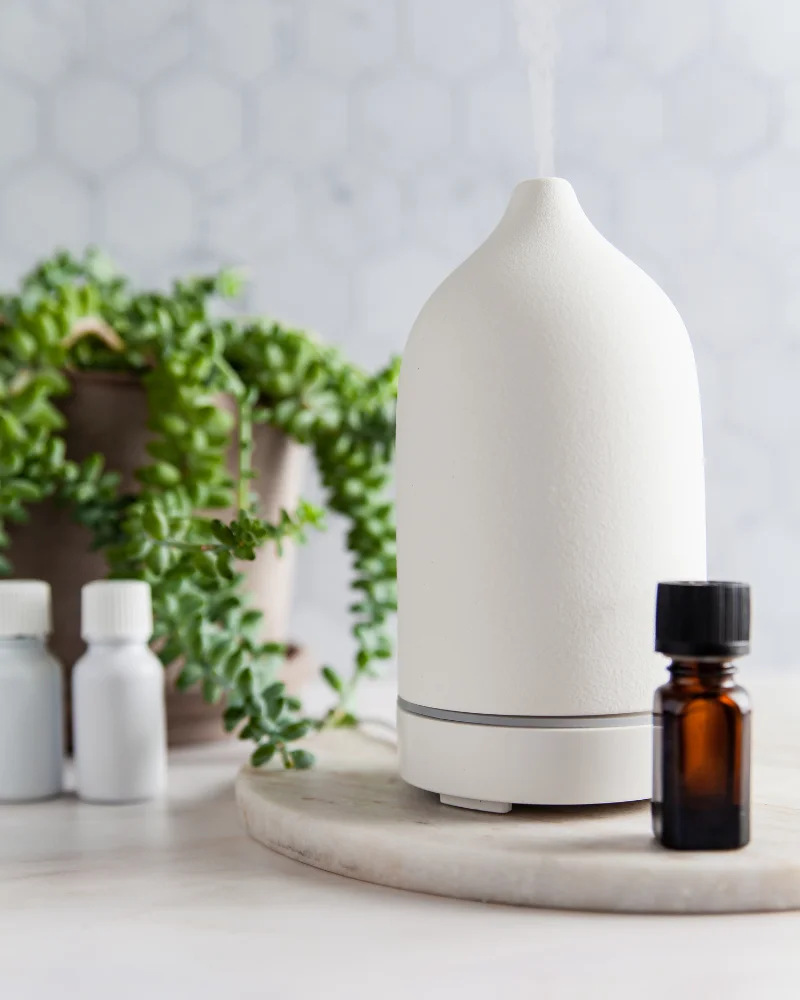
Essential oil diffusers harness the power of nature to freshen your home’s air using the aromatic compounds found in plant extracts. Here’s how they work:
Evaporation: The essential oils are placed in a diffuser, which uses heat, cold air, or ultrasonic vibrations to disperse the oils into the air.
Scent Release: As the oils evaporate, their fragrant molecules are released into the environment.
Scent Perception: Your nose’s olfactory receptors detect these scent molecules, sending signals to your brain, which interprets them as a particular aroma.
In addition to making your space smell wonderful, many essential oils also boast aromatherapy benefits. For example, lavender is known for its calming properties, while peppermint can help energize and clear the air.
Top 5 Essential Oils for Fresher Air
- Lavender: Known for its relaxing, soothing scent.
- Lemon: Offers a clean, invigorating citrus aroma.
- Peppermint: Refreshing and energizing, great for focus.
- Tea Tree: Purifying with antimicrobial properties.
- Eucalyptus: A cleansing aroma that can help open airways.
Our Favorite Essential Oil Diffuser: Aera
For a premium essential oil diffusing experience, we love Aera.
Their innovative diffusers use hypoallergenic, micro-droplet technology to provide long-lasting, even scent in spaces big and small.
Some standout features:
- Offers diffusers for both large and small rooms.
- Scents last an impressive 60 days.
- Hypoallergenic and safe for the whole family.
- No harmful VOCs, parabens, or other toxic ingredients.
While high-end, Aera diffusers are a worthwhile splurge if you are serious about ditching synthetic air fresheners in favor of a safer, more natural alternative.
Price
$199
notable features
Free from parabens, phthalates, sulfates, harmful VOCs, residues
location/shipping
United States, ships to the US, Canada, UK, Netherlands, and Singapore.
2. Baking Soda
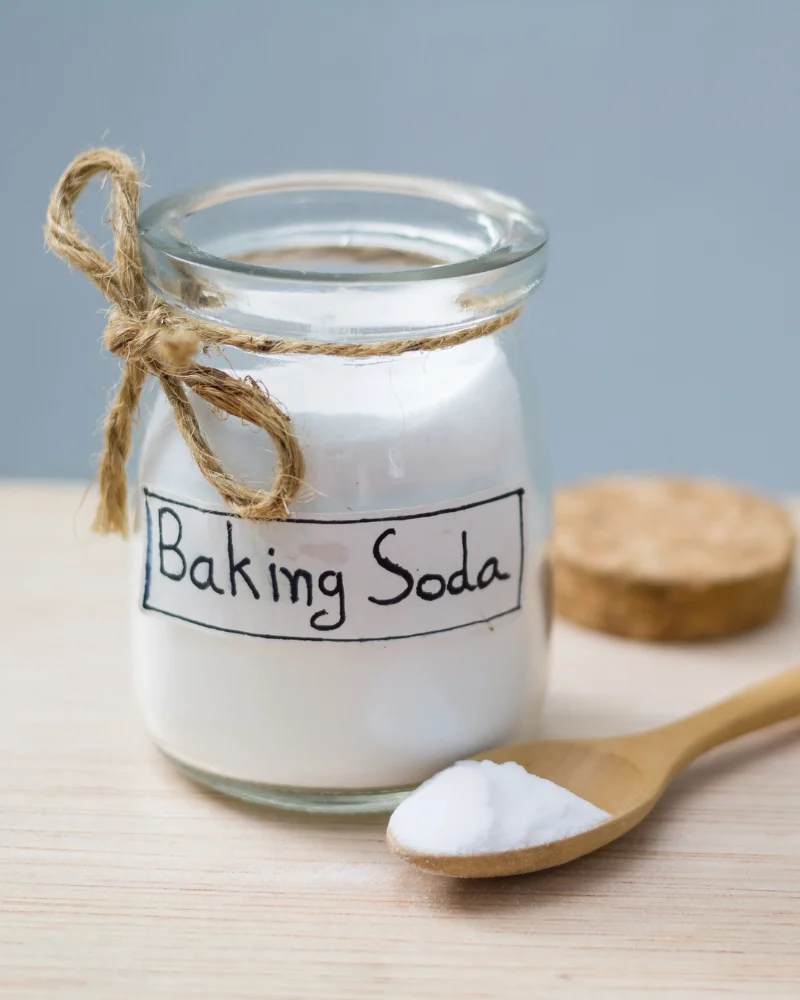
Baking soda, or sodium bicarbonate, is a powerhouse when it comes to neutralizing unpleasant odors. Its effectiveness lies in its unique properties:
Amphoteric Nature: Baking soda can react with both acidic and alkaline substances, like those found in many odor-causing compounds, chemically neutralizing them.
Absorption: It acts like a sponge, absorbing moisture and VOCs that contribute to bad smells.
Odor Masking: While not a long-term solution, baking soda can temporarily mask odors, providing a fresher scent.
Three Ways to Use Baking Soda as an Air Freshener
Carpet Deodorizer: Sprinkle baking soda generously over carpets and rugs, let it sit for at least 15-30 minutes (longer for stronger odors), then vacuum. The baking soda will absorb odors trapped in the fibers.
Fridge Freshener: Place an open box of baking soda in your fridge or freezer, replacing it every three months. It will neutralize food odors without artificial fragrances.
DIY Air Freshener Spray: Mix 1 cup water, 2 tablespoons baking soda, and a few drops of your favorite essential oil in a spray bottle. Shake well before each use for a natural, odor-busting spritz.
Whether you use it to deodorize carpets, freshen your fridge, or create a custom air freshening spray, baking soda is a safe, effective, and affordable choice for a more natural home.
3. Vinegar
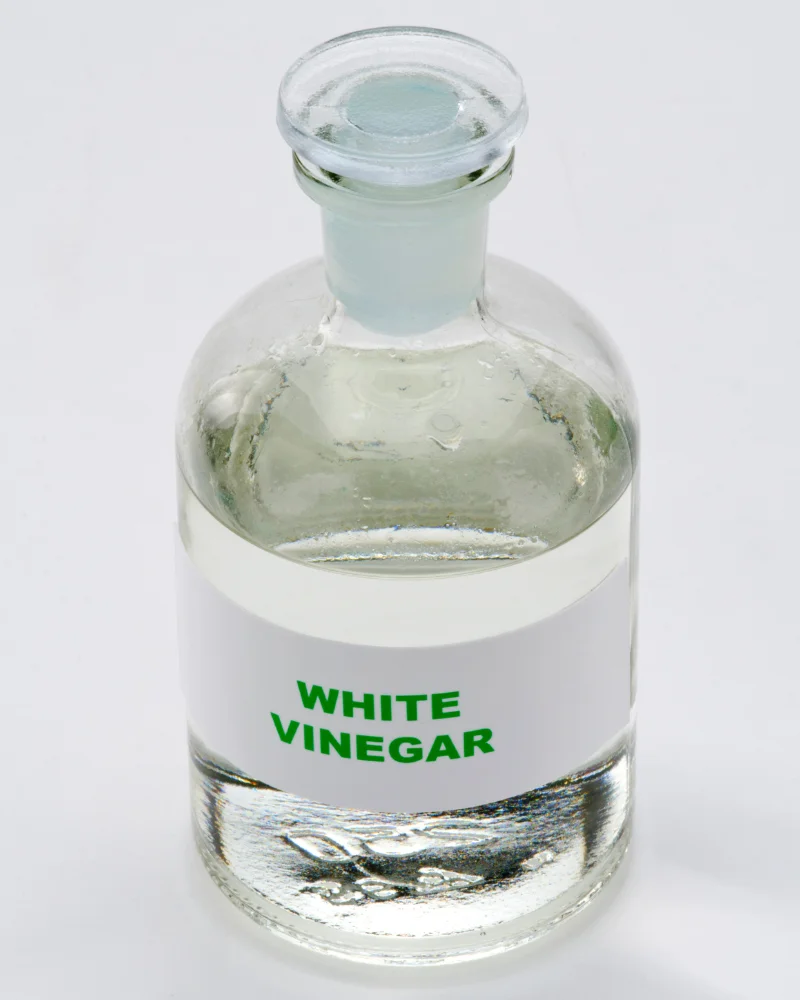
Vinegar is for more than just salad dressing! It’s also a fantastic natural odor eliminator. Here’s how it works:
Acidity: Vinegar contains acetic acid, which reacts with alkaline odor molecules, altering their chemical structure to reduce smell.
Masking Effect: The strong, pungent aroma of vinegar temporarily overpowers other odors, though this dissipates as the vinegar evaporates.
VOC Interaction: Vinegar can help to neutralize some VOCs, which contribute to many common household odors. However, it may not be effective against all types of VOCs, especially strong odors or large amounts.
DIY Vinegar Air Freshener Recipes
Basic Spray: Mix equal parts water and white vinegar in a spray bottle. Spritz in smelly areas like the kitchen or bathroom.
Citrus Infusion: Place orange or lemon peels in a jar, cover with vinegar, and seal. Let infuse for 1-2 weeks, strain, then mix with equal parts water in a spray bottle for a citrusy fresh scent.
Herbal Essence: Infuse vinegar with fresh herbs like rosemary, mint, or lavender for a week. Strain and mix with water in a spray bottle for a crisp, green aroma.
While vinegar might have a strong smell initially, it quickly fades, taking unpleasant odors with it. Experiment with adding different natural ingredients to create your signature home scent.
4. Activated Charcoal
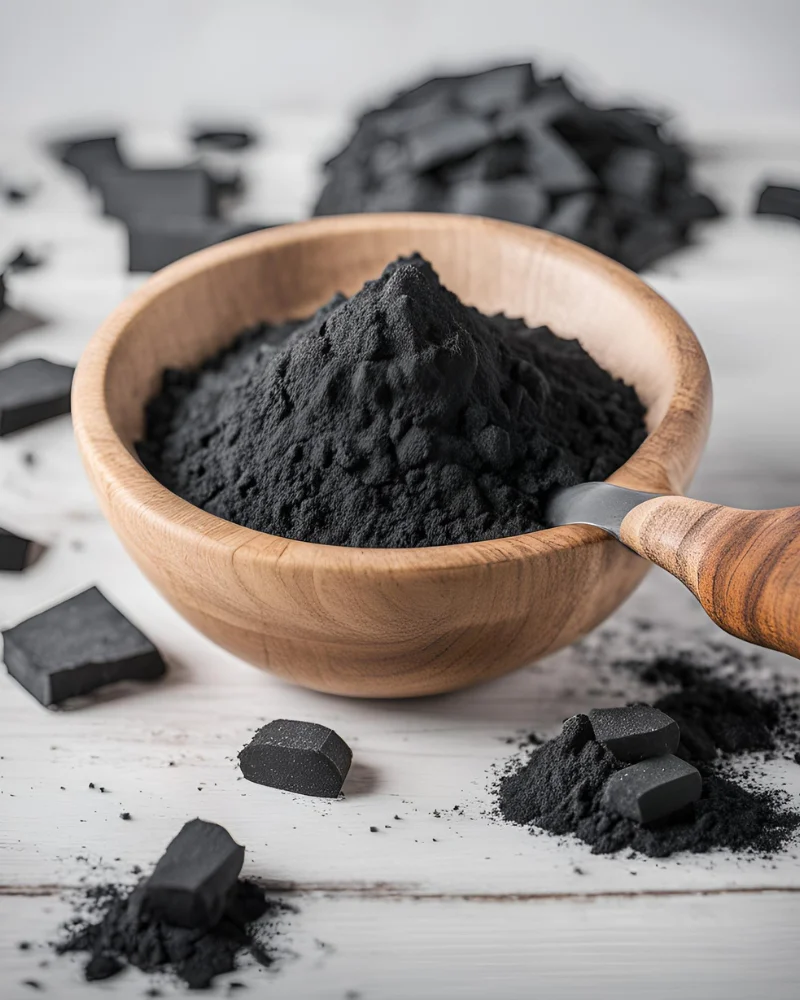
Activated charcoal is a highly porous form of carbon treated to increase its adsorption capacity. It’s incredibly effective at removing odors because:
Large Surface Area: One gram of activated charcoal can have a surface area of up to 3,000 square meters, providing ample space for odor molecules to adhere.
Adsorption: Odor particles stick to the surface of the charcoal through a process called adsorption, trapping them inside the pores.
Chemical Attraction: The carbon in activated charcoal has a slight positive charge, attracting negatively charged odor molecules like a magnet.
Creative Ways to Use Activated Charcoal for Fresher Air
Charcoal Bags: Place sachets of activated charcoal in odor-prone areas like closets, bathrooms, or near pet beds. You can buy these or make your own with breathable fabric and loose charcoal.
Fridge Deodorizer: Keep an open container of activated charcoal in your fridge to absorb food smells.
Shoe Freshener: Insert small bags of charcoal into shoes between wears to prevent odor buildup.
Litter Box Odor Control: Place a tray of activated charcoal near your cat’s litter box to minimize odors.
Remember to recharge your activated charcoal every month or so by placing it in direct sunlight for a few hours. This releases trapped odors and extends its lifespan.
5. House Plants
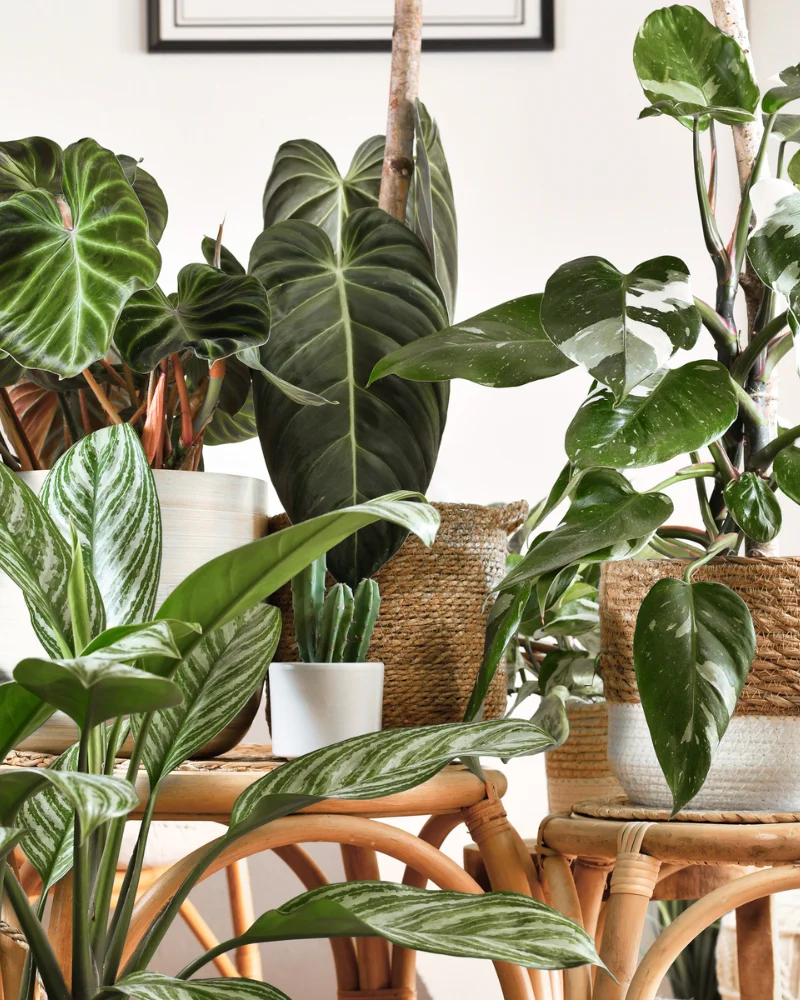
Not only do houseplants add a touch of natural beauty to your home, but they also work hard to clean the air you breathe. They purify through several mechanisms:
Photosynthesis: Plants absorb carbon dioxide and release fresh oxygen, improving air quality.
Pollutant Absorption: Many plants can absorb airborne toxins like benzene, formaldehyde, and ammonia through their leaves and roots.
Humidity Regulation: Plants release moisture vapor, helping balance humidity levels and remove airborne particulates.
Phytoremediation: Some plants can even break down and neutralize certain pollutants within their tissues.
Top 5 Air-Purifying Houseplants
- Snake Plant: This low-maintenance plant is excellent at removing formaldehyde, xylene, and nitrogen oxides. Bonus: it releases oxygen at night, making it perfect for the bedroom.
- Spider Plant: The fast-growing spider plant is adept at removing indoor air pollutants like formaldehyde, xylene, and carbon monoxide. It’s also pet-safe!
- Peace Lily: This elegant plant neutralizes ammonia, benzene, and trichloroethylene. It also prefers low-light conditions, making it ideal for offices or bathrooms.
- Bamboo Palm: Efficient at filtering formaldehyde, benzene, and carbon monoxide, bamboo palms also help regulate humidity.
- Golden Pothos: This trailing vine is one of the easiest houseplants to grow, and it effectively removes air toxins like formaldehyde, xylene, and carbon monoxide.
By incorporating these natural wonders into your space, you’ll enjoy fresher air and a greener home. Plus, caring for plants is a great way to destress and connect with nature.
6. Simmer Pots

Simmer pots are a natural and fragrant way to infuse your home with delightful scents. Here’s why you should try this method:
Natural Ingredients: Simmer pots use fruits, spices, and herbs to create an aroma, avoiding synthetic fragrances and harmful chemicals.
Customizable Scents: Mix and match ingredients to design your ideal home scent, whether it’s invigorating citrus or cozy cinnamon.
Humidifying Effect: As the water simmers, it releases moisture into the air, benefiting dry indoor environments.
Aromatherapy Advantages: Many popular simmer pot ingredients like lavender and vanilla have been shown to promote relaxation and uplift mood.
Cost-Effective: Compared to store-bought air fresheners, simmer pots are an affordable, eco-friendly option that uses common household ingredients.
How to Make a Simmer Pot
Fill a pot with water and bring it to a gentle simmer. Add your favorite combination of natural ingredients like sliced citrus, herbs, and spices.
Some tried-and-true blends include:
- Orange slices, cinnamon sticks, and cloves.
- Lemon slices, rosemary sprigs, and vanilla extract.
- Apple peels, cinnamon sticks, and nutmeg.
Allow the mixture to simmer on low, adding water as needed. Enjoy the wafting aroma as your home fills with the comforting scents of natural goodness!
By experimenting with different recipes and ingredients, you can craft the perfect simmering scent to match any mood or season.
7. Coffee Grounds

Used coffee grounds are an often-overlooked tool for eliminating unwanted odors in your home. Here’s how they work:
Porous Structure: Coffee grounds are filled with tiny pores that can trap and neutralize odor molecules.
Large Surface Area: The fine particles of ground coffee provide ample surface area for absorbing a wide variety of odors.
Chemical Interaction: Compounds in coffee can chemically neutralize certain unpleasant odors rather than just masking them.
Pleasant Scent: The rich aroma of coffee can help conceal lingering odors while the grounds work their magic.
Creative Ways to Deodorize with Coffee Grounds
Refrigerator Freshener: Place a bowl of dry grounds in your fridge to neutralize food odors. Replace every few weeks.
Garbage Disposal Deodorizer: Toss a handful of grounds into your garbage disposal and grind while running cold water to eliminate sink smells.
Closet or Drawer Sachets: Hang small bags of coffee grounds in closets or place them in drawers for a fresh, clean scent.
Using coffee grounds as an air freshener is not only effective but also eco-friendly, as it repurposes a common household waste item.
8. Citrus
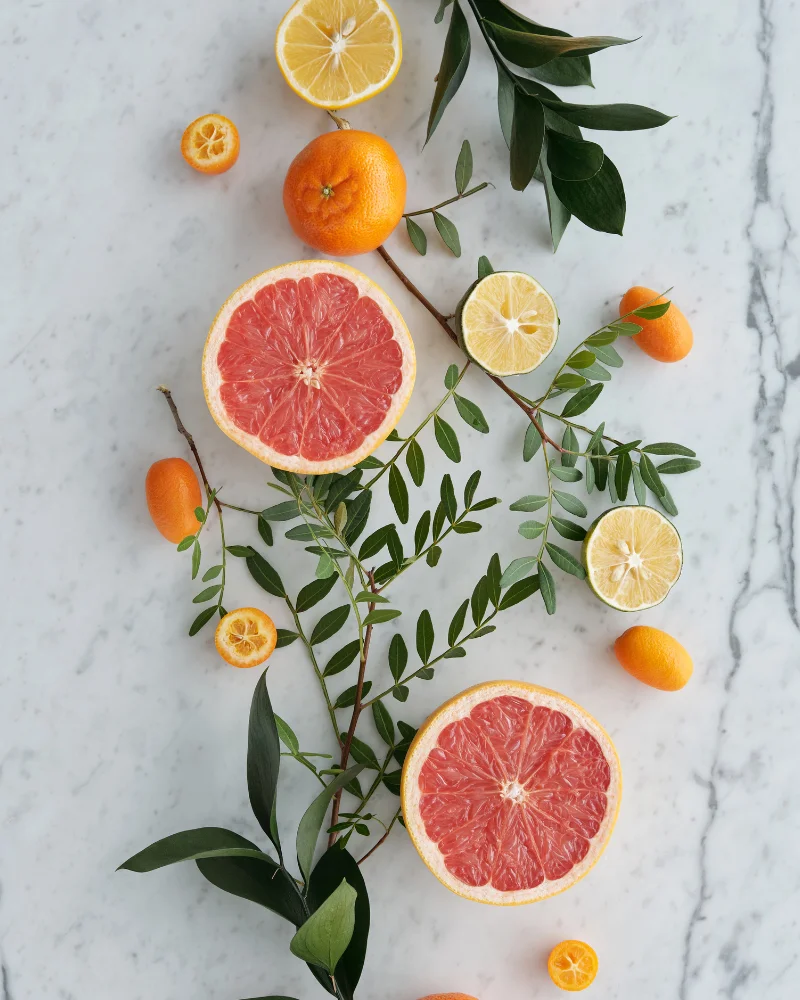
Citrus fruits like lemons, limes, oranges, and grapefruits are excellent natural air fresheners due to their unique properties:
Acidity: The high acidity in citrus helps neutralize alkaline odor molecules, effectively reducing bad smells.
Essential Oils: Citrus peels contain potent oils that release a fresh, clean scent while also breaking down odor compounds.
Antibacterial Properties: Compounds in citrus can inhibit the growth of odor-causing bacteria and fungi.
Energizing Aroma: The scent of citrus is uplifting and energizing, instantly improving the ambiance of any space.
Easy Ways to Freshen the Air with Citrus
Simmer Pot: Slice lemons, limes, or oranges and simmer in water on the stove. Add herbs like rosemary or thyme for extra scent.
Garbage Disposal Freshener: Toss citrus peels down the disposal and grind to eliminate drain odors.
Citrus Vinegar Cleaner: Infuse vinegar with citrus peels for two weeks, then strain and use as a natural, odor-busting cleaner.
Room Spray: Mix lemon juice, water, and a splash of vodka or rubbing alcohol in a spray bottle. Use it as a room spray or fabric refresher.
Next time you eat an orange or squeeze a lemon, don’t forget to keep those peels to get a clean-smelling home!
9. Commercial Natural Air Freshener Products

While making your own air fresheners is often the most eco-friendly and customizable choice, there are times when a store-bought solution is more convenient. Here are some tips for selecting a natural commercial air freshener:
Read Labels: Look for products that list all-natural ingredients and avoid those with synthetic fragrances, phthalates, or parabens.
Seek Certifications: Choose air fresheners certified as organic, non-toxic, or eco-friendly by reputable third-party organizations.
Avoid Aerosols: Aerosol sprays can irritate the lungs and often contain propellants and other harmful chemicals. Opt for pump sprays, gels, or diffusers instead.
Consider Sensitivity: If you have allergies or sensitivities, look for fragrance-free options or those specifically designed for sensitive populations.
Our Top Picks for Natural Air Fresheners
Fresh Wave Gel: This plant-based gel absorbs odors naturally without masking them with fragrance. It’s non-toxic, biodegradable, and safe for use around pets and children.
Scent Fill: Scent Fill offers certified 100% plant-based options with absolutely no artificial additives or enhancements.
Enviroscent: The first-ever liquid-free, non-toxic plug-in air freshener. It’s free from parabens, phthalates, phosphates, acetone, formaldehyde, and neurotoxins.
While commercial air fresheners can be convenient in a pinch, remember that the most natural and sustainable option is often to choose reusable, refillable solutions or to make your own using simple household ingredients.
When possible, address odors at the source for a truly fresh and healthy home.
This has been your comprehensive guide to the best natural alternatives to air fresheners in 2024.
Making the switch to natural air fresheners might seem a little inconvenient at first, but it’s one of the best decisions you can make for your health.
We encourage you to experiment with these natural air freshening solutions, whether it’s an essential oil diffuser, a citrus-infused room spray, or a fragrant stovetop potpourri. We think you’ll be amazed at how easy and enjoyable it is to freshen your home naturally.
We’d love to hear about your experiences with natural air fresheners! Share your favorite recipes, tips, or tricks in the comments below. Here’s to a fresher, cleaner, and healthier future!
Loved this article on non-toxic alternatives to air fresheners? Check these out!
